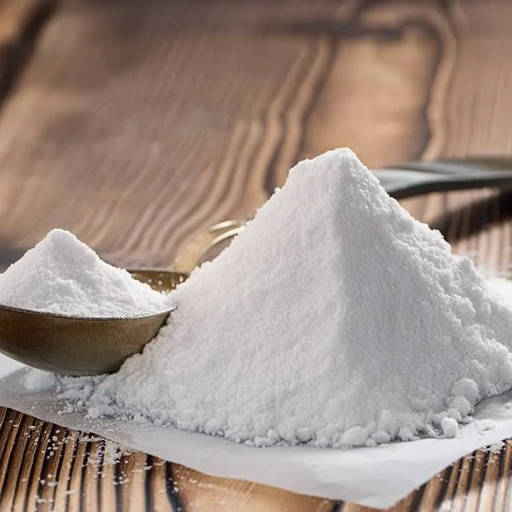Magnesium sulfate (Epsom salt) is an outstanding mineral of great value for your garden and home. This guide will cover how Epsom salt can improve plant growth, increase nutrient absorption, and boost overall plant health. By knowing its features and uses, you can exploit the potential of Epsom salt to raise healthy plants that radiate with vitality. Whether you have many years of experience or are just beginning, this piece will teach you helpful ideas and techniques when using Epsom salt appropriately in your horticultural pursuits.
What is Epsom Salt, and How Does it Benefit Plants?
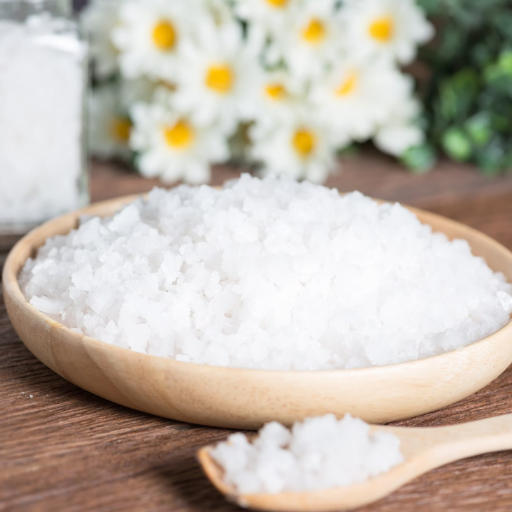
Understanding Magnesium and Sulfur in Plant Growth
Magnesium and sulfur are essential to plants’ growth. Magnesium is one of the crucial components of chlorophyll, which enables photosynthesis and converts light energy into chemical energy. It also helps form some essential enzymes that catalyze various metabolic processes. In contrast, sulfur is required for amino acid and protein synthesis to support general plant growth and metabolism. Moreover, it enhances plant disease resistance and nitrogen fixation, thus improving plant nutrient acquisition. Healthy and vigorous gardens can be achieved when soil contains enough magnesium and sulfur.
Benefits of Epsom Salt for Nutrient Deficiencies
Epsom salts have become an invaluable resource for plant nutrient deficiencies, especially those associated with magnesium or sulfur. Whenever symptoms include yellowing leaves (chlorosis), stunted growth, etc., applying Epsom salt effectively supplies these vital nutrients.
The following are a few crucial benefits and technical parameters:
- Magnesium Deficiency: Chlorophyll depends on adequate quantities of magnesium. A shortage frequently leads to interveinal chlorosis on mature leaves. You may use 1-2 tablespoons of Epsom salt dissolved in water and applied once per month to your crop during the growing season before you realize a difference. This means that each plant will receive approximately 1-2 grams of magnesium when using this amount, promoting healthier foliage and increased photosynthesis.
- Sulfur Deficiency: Protein synthesis necessitates sulfur, which is also essential for making certain growth hormones. The symptom of a lack of this element is uniform yellowing on young leaves. Solution: Apply directly to the soil or use a foliar spray containing one tablespoonful per gallon every other week. One application yields about 0.5-1 gram of sulfur, aiding better development and boosting endurance against diseases.
- Nutrient Absorption: Epsom salt can significantly improve plants’ overall health. It is also helpful in the absorption of other nutrients, such as nitrogen and phosphorous. Thus, plants can thrive only if there is an optimal or balanced supply of all necessary nutrients for vigorous growth and high productivity.
Following these conditions and appropriately applying Epsom salt can make gardeners’ plants more healthy and productive.
Why Epsom Salt is Good for Your Garden
I always find it very useful to use this salt to correct some common deficiencies and raise my plants’ health through practical gardening sessions. This not only boosts chlorophyll but also increases photosynthesis due to its magnesium component, leading to healthy foliage. Similarly, sulfur helps in protein synthesis, thus eliciting increased plant height and resistance. Notably, Epsom salts aid nutrient absorption, making an environment suitable for growing crops in my garden because they need proper nutritional balance. The overall benefits are supported by science and results, making it worth having one among my gardening tools.
How to Apply Epsom Salt in the Garden?
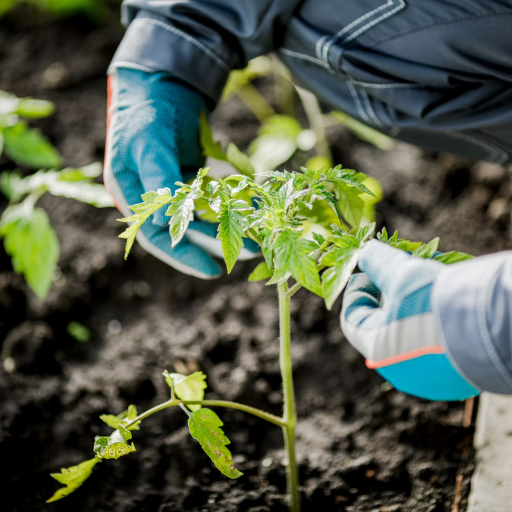
Different Methods of Applying Epsom Salt
In my garden, I have found different effective ways of applying epsom salt to enable me to get the most benefits. One of the easiest methods is dissolving around a tablespoon of epsom salt in a gallon of water and using it as a foliar spray. I apply this solution directly to leaves every few weeks, especially during the growing period, to boost their nutrient intake. I also find it helpful when mixing magnesium sulfate directly into the soil, usually one cup per 100 square feet during planting. This ensures that magnesium and sulfur are available for root uptake. Lastly, I sometimes add some Epsom salt into my compost to decompose slowly and enriches the soil with time. All these ways have helped me attain healthier plants in my garden.
How Many Tablespoons of Epsom Salt Per Gallon?
I usually use one tablespoon of Epsom salts per gallon of water while using them in water because this works well for almost everything on which you need to use Epsom salts. This rate creates a balanced nutrient solution that nourishes my crops without overdoing them. It is essential to modify this dosage depending on individual crop requirements or soil conditions; sometimes, I reduce it for more tender species or slightly increase it for those requiring extra magnesium. Following these guidelines will ensure that my plants get the nutrients their bodies need, promoting good health.
Best Practices when Applying Epsom Salts at Base Planting
Firstly, whenever I apply Epsom salts around my plants’ bases, I make sure … . Normally, about one teaspoonful of salts is adequate around each plant’s base but should not directly touch stems since it may cause burnings on them. After applying the salts, I constantly water the area well to help dissolve the Epsom salt and facilitate nutrient absorption. For me, timing is critical; therefore, I only apply it during the growing period or right before flowering for maximum impact. Besides that, I monitor them for any signs of stress or growth recovery, in which case I can alter my application frequency. This method has consistently supported healthy growth and vibrant blooms in my garden.
Using Epsom Salt for Potted Plants
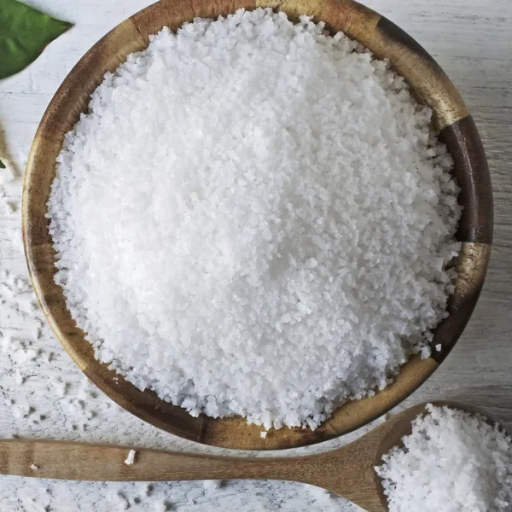
Proper Dosage of Epsom Salt for Potted Plants
I have found that, generally, it is advised to use one teaspoonful of salt with a gallon of soil. This will help supply enough magnesium and sulfur without any risk of imbalanced nutrients. For larger nutrient-intensive plants, I could go up to a tablespoon per gallon, but I still make adjustments based on what each plant needs.
However, here are my technical justifications:
- Magnesium Content: It contains roughly 10% magnesium, which is essential in photosynthesis and general plant health.
- Sulfur Content: An average of about 13% sulfur also contributes to the production of amino acids and essential oils.
I always mix it into the ground entirely to ensure it is well distributed. My approach includes applying it every month during the growing season while also looking for symptoms like yellowing leaves, which would indicate deficiency. This method has consistently yielded healthier container plants with more vigorous colours.
How Epsom Salt Boosts Flowering in Plants
Using Epsom salt has tremendously increased flowering in my own experience. Magnesium is essential for photosynthesis; therefore, by introducing Epsom salt into my care schedule, I will ensure sufficient magnesium for bright blooms. During the budding phase, I usually dissolve approximately one tablespoonful of Epsom salt in water and then apply it directly to the soil. Apart from encouraging blooming, this process enhances color and scent. Moreover, sulfur helps form amino acids critical for flowering. When I include Epsom salt and other practices, my flowering plants become more muscular, yielding more flowers.
Epsom Salt Foliar Spray – A Step-By-Step Guide
From my experience, using foliar sprays with Epson salts can quickly deliver magnesium and sulfur straight to the leaves, thus giving them an immediate nutritional boost. Below are some steps that I follow:
- Make The Solution: To begin with, I mix a tablespoon of Epsom salt in a gallon of hot water. The heat helps dissolve the salt more efficiently when sprayed.
- Pour Into A Sprayer: After entirely dissolving Epsom salt, I pour it into an empty spray bottle or garden sprayer.
- Choose your Timing: It is critical to select a time when the sun is not too intense, either early in the morning or late afternoon, since this avoids leaf burn and enhances absorption.
- Spray Evenly: Standing 12-18 inches from my plants, I spray the mixture equally on top and underneath to obtain maximum results.
- Application Frequency: I usually do this every four to six weeks during the growing season, but sometimes, it depends on what my plants want. I will add frequency in case of deficiency symptoms.
These steps have resulted in greener and stronger-looking leaves, which demonstrate how Epsom salt could be used as a foliar spray for improved plant health.
Can Epsom Salt Help with Specific Plants?
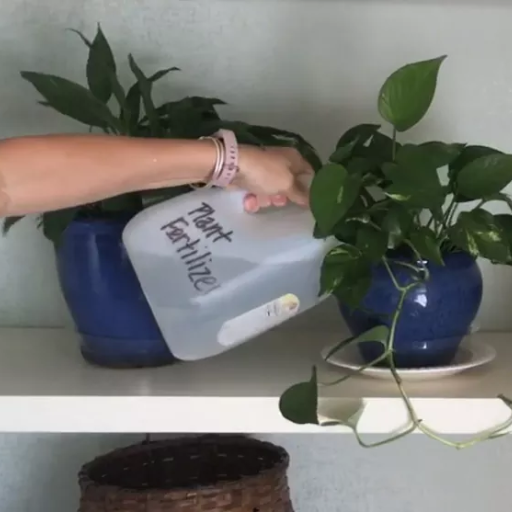
Benefits of Epsom Salt for Tomato Plants
As I have used Epsom salt in the past, it has made my tomato plants grow much better and yield more. When photosynthesis is conducted, the magnesium found in this salt is needed, and it also improves the uptake of nutrients. My tomatoes taste better and are generally healthier when they include Epsom salt in my routine planting practices. For instance, this helps prevent blossom-end rot, which is expected due to calcium deficiency because magnesium supports better calcium absorption. My tomatoes have grown so well with abundant and delicious fruits after mixing Epsom salt into the soil during planting or using it as a foliar spray.
How to Use Epsom Salt for Roses and Flowers
Usually, I prepare a solution by dissolving a gallon of water mixed with one tablespoon of Epsom salt to make a sprayer that can be applied on leaves. The solution should be sprayed on the foliage and soil around plants, especially when their flowers start budding during their growth period. This mixture enhances plant health through necessary nutrient absorption from essential magnesium and improved nutrient transfer. Sometimes, I sprinkle some small quantities at the base of plants when planting or flowering just to help grow them properly. Thicker stems and sturdy flowers are what I get by using Epsom salts in gardening so that my garden looks beautiful.
Adding Epsom Salt for Vegetables: What You Need to Know
Through experience, I have learned that using epsom salts on vegetables is very beneficial, especially crops like peppers, cucumbers, and squash. Usually, I mix one tablespoon of Epsom salts with a gallon of water and then use it as a foliar spray during growth season. Growth enhancements such as increased nutrient uptake via root hairs are seen. Moreover, at planting time, these chemical compounds may be put directly into the earth’s surface by diluting them within the soil itself, where it enhances root formation. This means that leaves become greener, and photosynthesis improves due to the magnesium in Epsom salts, which is essential for chlorophyll production. Furthermore, I have realized that since I started using Epsom salt as a regular practice in my vegetable gardens, I can harvest more from it; thus, it has become a staple food in our home.
Alternatives to Epsom Salt in Gardening
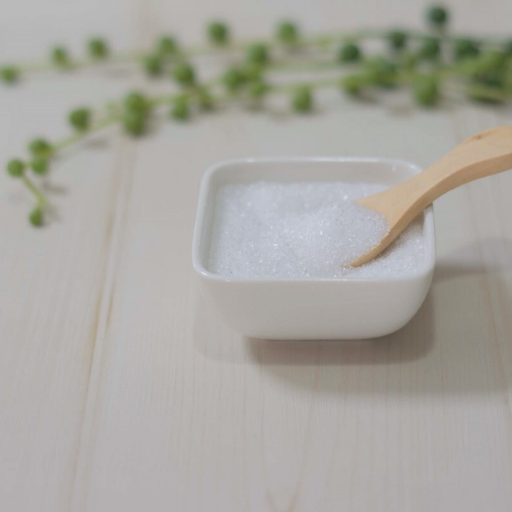
Other Sources of Magnesium for Plants
Apart from Epsom salt, I have come across some other good sources of magnesium that can help me in my garden. For instance, dolomitic lime is an excellent substitute as it provides magnesium to the soil and also helps raise pH in acidic soils. Another option I have found helpful is solid form magnesium sulfate, which mixes directly into the planting soil. Additionally, greensand or seaweed extracts are helpful because they provide slow-release magnesium sources and other essential trace minerals. These alternatives work together with Epsom salt, leading to vibrant health in my garden.
Comparing Epsom Salt to Other Fertilizers
Considering how different Epsom salts are from other fertilizers, it is evident that their composition gives them an advantage. Most of it consists of magnesium sulfate, needed for chlorophyll production and various plant functions. Websites like Gardening Know How and The Spruce show that while regular fertilizers mainly concentrate on the three primary nutrients—nitrogen (N), phosphorus (P), and potassium (K)—Epsom salt serves the crucial purpose of providing magnesium ions responsible for nutrient uptake and photosynthesis improvement.
Unlike synthetic options, Epsom salt qualifies as organic since it improves soil structure and invites beneficial microbes to thrive. This implies that common fertilizers may provide macronutrients at rates such as 20-20-20 NPK; however, by adding around 10-20% MgO per application, depending on what one prefers, Epsom salt instead complements the nutritional profile without overwhelming plants with excessive nitrogen or phosphorus.
To back up its use against traditional fertilizers, I use some technical information:
- Magnesium content: It contains 9.8 percent magnesium necessary for plant growth.
- Sulfur content: It also has a sulfur content of 13 percent, which helps in the synthesis of proteins and amino acids.
In summary, Epsom salt does not substitute for complete fertilizer routines, but its specific micronutrient contributions greatly enhance plant development. Hence, it is useful for crop plants with magnesium shortages. This explains why I have made it one of my main fertilizers in gardening.
When to Use Epsom Salt vs. Regular Fertilizer
Based on my experience, I would say that Epsom salt has more benefits when dealing with certain deficiencies in a plant, like sulfur and magnesium. However, there are times when it’s necessary to use this product, especially during the growing season when there is a visible sign of magnesium deficiency, such as yellowing leaves among veins, which are very common in tomato and pepper plants. On the other hand, I prefer using ordinary fertilizers because they serve as overall feeds for crops at their early stages of growth when there is a need for nitrogen, phosphorous, and potassium (NPK). For instance, during planting time, I use balanced fertilizer and subsequently add Epsom salts after the establishment of the crops to promote healthy growth and flowers. Ultimately, Epsom salt is an integral part of my gardening toolbox that serves as a supplement alongside regular fertilizers to maximize the health and productivity of agricultural products.
Reference sources
Frequently Asked Questions (FAQs)
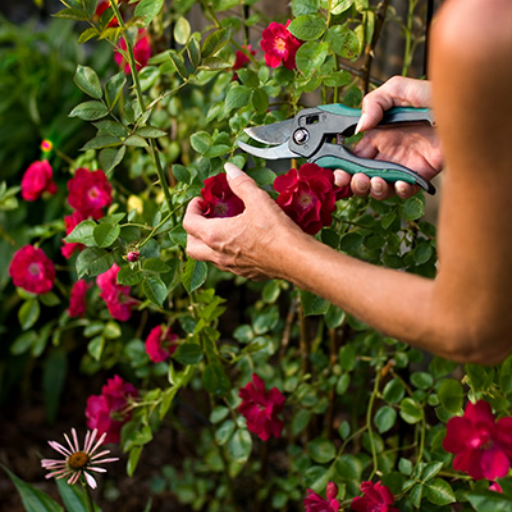
Q: What is the use of Epsom salt for plants?
A: Epsom salt is used primarily to provide magnesium and sulfur, which are essential nutrients. It can enhance nutrient absorption and improve overall plant health.
Q: How do I apply Epsom salt to plants in my vegetable garden?
A: Mix one tablespoon of Epsom salt with a gallon of water to create an Epsom salt solution. Use this solution to water your garden plants or spray it directly on the leaves to help plants with magnesium deficiency.
Q: Which plants benefit the most from Epsom salts?
A: Many plants, especially vegetables like tomatoes and pepper, benefit from Epsom salts. The magnesium content helps improve nutrient uptake and overall plant vitality.
Q: How often should I use Epsom salt for garden plants?
A: Epsom salt should be applied every 4-6 weeks during the growing season. Based on their health and growth, monitor your plants to determine if they need additional applications.
Q: Can I use Epsom salts for seed germination?
A: Yes, Epsom salts can aid in seed germination. To enhance seed growth potential, soak seeds in a solution of Epsom salt prior to planting.
Q: What are some ways to use Epsom salts effectively in gardening?
A: There are various ways to use Epsom salts, including mixing one tablespoon per gallon of water for watering, sprinkling it around the base of plants, or dissolving it in the water used for foliar sprays.
Q: Does Epsom salt contain any harmful substances for plants?
A: No, Epsom salts do not contain harmful substances for plants. They are made of magnesium sulfate, which is safe and beneficial for plant growth.
Q: Is Epsom salt good for all types of plants?
A: While Epsom salt can be suitable for many types of plants, it is particularly effective for flowering plants and vegetables. However, it is essential to note that not all plants may require additional magnesium.
Q: How do I make Epsom salts work for my plants?
A: To make Epsom salts work for your plants, apply the correct dosage, such as two tablespoons of Epsom salt mixed with water, and observe how your plants respond. Adjust the frequency based on their health and growth patterns.
Q: What should I note when using Epsom salt for plants?
A: Epsom salt enhances growth but should not be overused, as excessive amounts can lead to nutrient imbalances. Constantly monitor your plants for signs of magnesium deficiency or excess.



